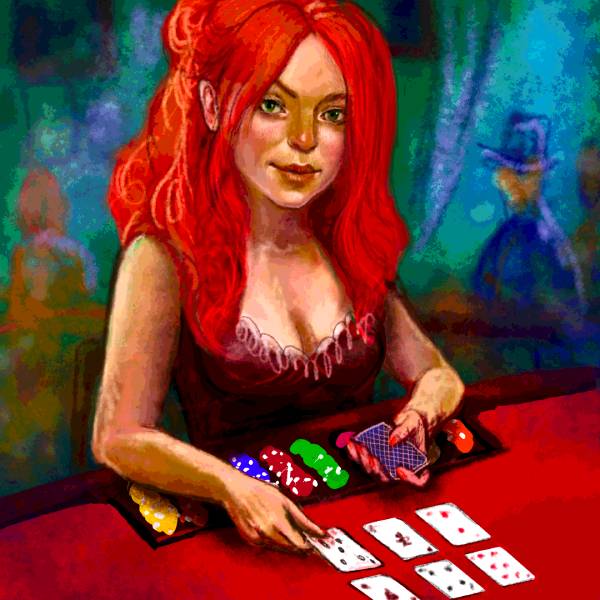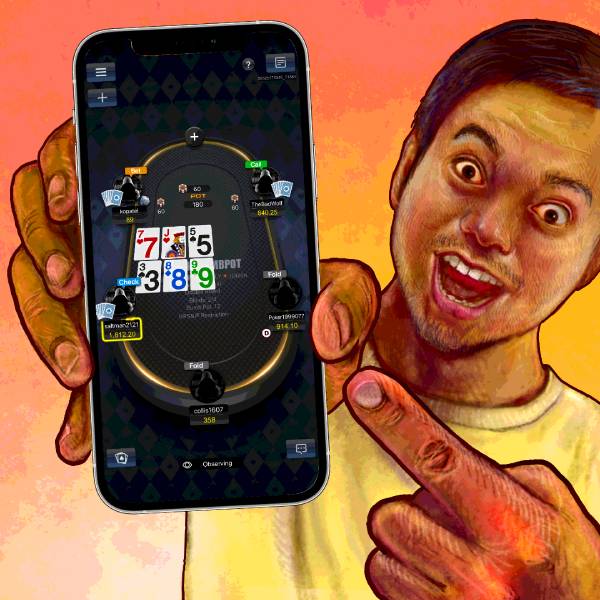You Need Double Top for a Double Flop
Don't Get Quartered
Double the Tilt
What is Double Flop Omaha?
Simply put, Double Flop Omaha is normal Pot-Limit Omaha played with two community card boards arising from two simultaneous flops. Each board represents half the pot. It is similar to Pot-Limit Omaha Hi-Lo with splits and quartering but is played high only.
Double Flop Omaha is not a new format of poker. Originating from the casinos in the UK and France, there are many variants that are played, including triple flop and double-cross. PokerBros is special because it has captured the lion’s share of games in this format. The vertical aspect ratio of the PokerBros software lends itself perfectly to an enjoyable user experience when playing a game with two boards. The game is spread in numerous formats including 4-card, 5-card, and 6-card. The most popular way to play it currently is 6-card.
Is Double Flop Omaha the Same As Bomb Pots?
Bomb Pots are a variant of Double Flop Omaha, but these are not the same in the PokerBros app. Double Flop Omaha games can include periodic Bomb Pots, but by default, Double Flop Omaha is just normal PLO with two boards. The strategic implications are quite different. Bomb Pots mean that all players see both flops without having given information away in the pre-flop betting round. In Double Flop, the action plays out normally, with all the accoutrements of PLO like straddles and positional aggression.
History of Double Flop Omaha
Everyone knows that Omaha poker originated in the US as the name implies, but it was pesky Northern Europeans clad in designer scarves that popularized the multi-board variant of it. Split-pot stud games were popular, such as the annoyingly arcane London Lowball variant (where straights and flushes are also bad), but in the run-up to the poker boom in the early 2000s, many casinos started spreading pot-limit dealer’s choice games. In France, they played a game called Aviation (born in the famous ACF poker room), which is Double Flop Hold’em, while over in the UK, the smaller local or county poker rooms started offering games of 4-5-6 choice on the button PLO/PLO8. The problem with PLO8 in a live casino has always been the nittiness and difficulty for dealers in understanding how to read boards. Many players also didn’t like hi-lo games, having tired of Lowball Stud, so a compromise of sorts was had in the form of Double Flop Omaha.
Privately, commonly among casino staff, even more degenerate games like Triple Flop Omaha also took root. As the London and Paris poker scenes were close to each other, Double Flop Omaha made its way to France and largely supplanted the less action-oriented game of Aviation. The French already had their own crazy Omaha games such as Courchevel, which is PLO (again any number of hole cards, but typically 5) where pre-flop betting takes place knowing the first card of the flop. While Courchevel never truly went away in France, the mediocre popularity on PokerStars led online players to gravitate towards just 5 and 6-card PLO. Full Tilt Poker, an infamously failed regulated poker site that stole player money and allowed cheating from pros connected to the inside, offered some of the best low-stakes 6-card action online. It was one of the few places at the time to play it.
As the upheaval of regulation and poker’s waning popularity hit the 2010s, there really wasn’t much online action until the app games started to take hold around 2017. The stuffy constraints of bloated desktop poker software gave way to a poker-playing public that had ten years under their belt in the smartphone era. Mobile-first development allowed things to be done from scratch, and that meant the flexibility of infinite game options. That’s why poker apps like PokerBros have blown up with such popularity. The only problem being that those not in the poker scene when it happened were confused, while those who never stopped playing drifted on into the brave new ecosystem of agent-driven apps.
Players also faced new challenges caused by RTA cheating and solvers. Solvers first made mid-stakes NLHE almost unbeatable, but then they quickly came for 4-card PLO, then 5-card PLO. 6-card PLO got, and maybe still has, some immunity since relatively fewer players played this format, however, the lessons learned in 4 and 5-card are not that difficult to apply to 6-card either. Thus, most recreational players quickly took to ‘crazy’ variants like Double Flop and Bomb Pots on the apps. Thankfully, the addition of the second board, and game/player dynamics driven strategy caused by that extra board, really put the kibosh on RTA solver kids ruining the action for everyone. While this might not last forever, most seasoned players concur that Double Flop Omaha reminds them most of the boom days.
Variance – Is Double Flop PLO Swingy?
This is a tough question to be perfectly frank. Most uninitiated players will just say it’s bingo poker for fish. That’s definitely a false categorization, but Double Flop Omaha games often play far above the blind levels newcomers would expect. If you recognize that, and dip down to where your 100-hand standard deviation is more manageable for your risk of ruin, then it becomes quite similar in consistent winning to PLO8. That’s because it’s a game of freerolls and redraws. While the pots get all in quickly many times, it’s rare that you have less than 35% equity ever. PLO for solid players is around 150bb/100 as a standard deviation, while Double Flop is closer to 250. So if bankroll is a concern, drop down a couple of levels when you try out Double Flop. You are probably going to lose at first anyway, even if you are a winning player in other formats.
Beginner and Intermediate Strategy for Double Flop Games (6-Card)
Most people play Double Flop as 6-cards on PokerBros, so we will default our strategy advice for these games to assuming you are playing 6-card Double Flop PLO.
- Don’t play subpar hands out of position. There is no outthinking your opponent with a slightly worse hand. They will have at least one strong draw. If you play weak hands out of position, you will get crushed.
- It’s okay to check back strong hands. More so than in any other Omaha game, Double Flop has the most dynamic turns and rivers. You will save yourself a lot of pain by not inflating the pot, even in position, by simply checking back more flops and turns. It’s deceptive and prevents giving your opponent a favorable stack-to-pot ratio to go all-in when the board changes significantly. When you check, you make them believe you have more draws in your range which prevents stabs.
- A nut flush is just the beginning. If you have the nut flush on one board on the flop or turn, that’s great – you will likely get half the pot, but it doesn’t mean you are going to win overall. Make sure you can win the other board as well. If you can’t, they might have a stronger hand on the other board and be freerolling you to a full house or straight flush. This doesn’t mean don’t ever bet if you have a weaker draw on the other board, but it does mean pay attention.
- Checks are not passive on the river. Checking ranges are very polarized, especially in small pots. The smaller the pot, the more incentive there is to catch you with your hand in the cookie jar. When ranges are polarized, merge your ranges and bet small unless you have specific information and are exploiting with a bigger bet. In many games, Double Flop PLO can feel a lot like reverse limit, with the largest bets on earlier streets.
- If you are down three buy-ins, it’s best to quit. Even if you are a skilled player and not on tilt, Double Flop PLO gives a huge advantage to the player who is winning. You need to get folds post-flop – that’s where your long-term profit lies, not by making lucky hands on the river. When opponents sense any weakness, they become more stubborn in Double Flop. Poker is as much about what you know as what they think. It’s unwise to fight an uphill battle, so it’s best to leave the game and preserve your bankroll for another opportunity.
A: Double Flop Omaha is a variation of Pot-Limit Omaha where two sets of community cards are dealt, each representing half the pot. It originated in the casinos of the UK and France and is played high only. The game has various formats, including 4-card, 5-card, and 6-card, with the 6-card version being the most popular.
A: No, Bomb Pots are a variant but not the same as Double Flop Omaha. In Bomb Pots, all players see both flops without pre-flop betting, whereas in Double Flop Omaha, the action plays out normally with pre-flop betting and features like straddles and positional aggression.
A: Double Flop Omaha has its roots in Northern Europe where multi-board variations of Omaha became popular. In France, a game called Aviation, which is Double Flop Hold’em, was played, while in the UK, games like 4-5-6 choice on the button PLO/PLO8 were offered. Double Flop Omaha became popular as a compromise between these variations and eventually spread to other regions.
A: Double Flop Omaha tends to have higher variance compared to regular PLO. The game often plays at higher blind levels, and it is essential to manage bankroll effectively due to the dynamic turns and rivers and high equities. The standard deviation for Double Flop Omaha is closer to 250 compared to around 150 for regular PLO.
A: 1. Avoid playing subpar hands out of position.
2. It’s okay to check back strong hands due to dynamic turns and rivers.
3. Consider that a nut flush on one board doesn’t guarantee overall win; pay attention to both boards.
4. Checks are not passive on the river; consider polarized checking ranges.
5. If down three buy-ins, it is best to quit and preserve bankroll for another opportunity.

